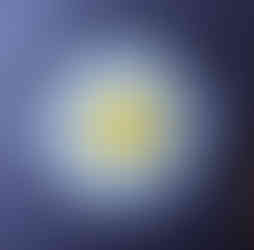Take Your Conscience to the Pawnshop
Terrace Gallery, until 13/3

Pitch a show with a title like this and I’m halfway onboard. But this group exhibition is likely a pretty safe bet given the selection of mostly London-based makers on the list. While happy to marinate in the titular proposition, essentially, it’s another great painting show from Terrace (currently run by Karl Bielik from the William the Fourth pub in Leyton), curated by painter David Leapman. Neil Gall appears to put objects and materials through curious performative practices, but what we’re actually being presented with is an incredibly rendered facsimile of the process on canvas; Selma Parlour pushes the limits of particular painterly techniques and strategies to create desirable abstract realms housing sets of motifs in curiously suspended states of compositional animation; and nobody achieves a sense of pathetic fallacy in paint quite like Lee Maelzer, who is known for her large-scale, disquieting landscapes of foliage and urban detritus, as well as tender interior views. Other artists in the eclectic mix: Karl Bielik, Jane Harris, Mike Cuddihy, Sarah Sparkes, Bob and Roberta Smith, Jeff Dellow, Hanz Hancock, Jenny Hager, Max Presneill, Suzy Willey, Peter Lamb and Jessica Voorsanger.
Images © the artists: top, Lee Maelzer; below (clockwise), Selma Parlour; Neil Gall; Karl Bielik; Jeff Dellow and; Jane Harris
Christine Rebet: Time Levitation
Parasol Unit, until 26/3

For those of us who remember the opening of Parasol Unit in 2004, a not-for-profit space that has become a beacon of the east-end gallery circuit, this is a sad moment. The London arm of the organisation closes with an immersive staging of animations by French artist Christine Rebet. As a neighbour of the inimitable Victoria Miro it has held its own, exhibiting artists across the making and international spectrum – from Tschabalala Self to Charles Avery, Mona Hatoum and David Claerbout – providing the space, time and budget for them to realise the most ambitious of projects. Rebet’s drawing practice offers an imaginative playground of literary proportions. Her ensemble cast of dead-girl hitchhikers, occult-curious aristocrats, PTSD-suffering soldiers, mythological creatures and monks are called on to play out the gamut of human dramas. And all are brought into contemporary relevance through the theatrical tropes of great playwrights, choreographers and storytellers. It’s the weaving of performative sensibilities that Rebet appears to achieve, working between image, narrative, set and the history of each craft at her disposal to create tales of dark and difficult times. Disarming her audience with lush handmade visuals and carefully staged atmospherics, she is able to usher us willingly into the spaces between the rocks and hard places.
Shara Hughes: Unmanageable
Pilar Corrias, until 28/3

Shara Hughes’ canvases have a straight-up painterly deliciousness designed to draw the viewer into each composition and render them entirely open to any narrative proposition she might choose to convey. Suggestions of flora, fauna, empty and peopled environments – in various states of construction – sing with the high colours of the Fauves and the from-life immediacy of Impressionist strokes; just not quite as we remember them. Sophisticated swathes of carefully orchestrated tones are pulled abruptly into chromatic relationships with out-of-the-tube hues of a more radical sensibility. European art history is of course dominated by male artists and Hughes dives fearlessly as a woman into the legacy mix, riffing on and running riot with its major conventions. ‘Unmanageable’ has come out of a period of reflection for the artist brought about by the complex situations of those close. Her ‘emotional landscapes’ at points weigh purposely heavy with, yet always speak lightly and deftly of, the experience of managing the emotions that ensue and the stuff of paint.
Tim Stoner: Al-Andalus
Modern Art, 28/2 - 25/4

‘Al-Andalus’ refers to the Iberian peninsula’s rich history, as the Muslim name for the region in the Middle Ages. From the from the (largely IG) evidence seen so far, Tim Stoner remains a man after the painterly heart of the European masters, and in firm control of his creative inheritance. Known for working between abstract and figurative concerns, the body and the landscape, Stoner’s focus here is the view from his home in Ronda, Spain, and how it alters according to the light, the seasons and myriad life details that have and continue to shape his personal perspective. I’ve seen past paintings simply and successfully constructed from minimal evidence of linearity and blocked-in colour, but his new works appear to be all about the layers. Whether glorious Venn-like workings out of spatial concerns on paper, or marquetry-veneer slices of figurative observation on canvas, they offer landscapes ripe for the projection of our imaginings. And, given the visceral sense through which these paintings convey moments in flux or of introspection, harbour associations with film and its illumination of subject, feverishly scratched etching plates and the magical margins of the over-printed image.
The Sky is Leaden in the South
Hollybush Gardens, 13/3 – 25/4

An apt title for a group show in these stormy late-winter days mid-Brexit, with the world in precarious ecological balance and in the grip of a viral outbreak. One wonders what is meant here by the south? In the UK, one might think of the liberal view under threat of erosion, perhaps? Doubtless, the collective international sensibility manifested is unlikely to lead us into any definitive cul-de-sacs and, given the stellar list of artists involved, the view afforded from every direction will be interesting. There’s just the one image released at the time of writing, of a philosophically questioning neon sign that reads: ‘Sono soltanto qui e ora?’, which roughly translates as ‘I’m only here and now’. But certainly this seed sown of impermanence and living in the present will find fertile ground in the performative practice of Ruth Proctor who captures the fleeting sensibilities that shape us; the forensically produced diaristic film works of Charlotte Prodger; Lubaina Himid’s painterly cast of protagonists curiously caught traversing the everyday; and the poignantly patchworked, politically charged investigative processes of artist filmmaker Helen Cammock – to namecheck a few from a powerful female assembly that also includes Lis Rhodes, Ellen Lesperance, Liliana Moro and Andrea Büttner.
All images © the artists and their respective galleries











Comments